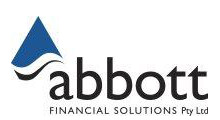Knowledge is power. Financial knowledge is particularly powerful when it comes to securing your future. Women and men alike can benefit from acquiring financial knowledge and skills. But when it comes to money, women face unique challenges.
The last few years have seen the spotlight shining brightly on women’s issues globally with calls for political and social change, and exciting progress has been made to close the gender gap. However, there are still a number of problem areas. It may come as a surprise that one of these areas is financial literacy.

What is financial literacy?
Financial literacy is not simply numeracy. The OECD International Network on Financial Education defines financial literacy as a combination of awareness, knowledge, skill, attitude and behaviour necessary to make sound financial decisions and ultimately achieve financial wellbeing.
Being financially literate is essential when it comes to retirement planning, wealthaccumulation and economic empowerment.
The financial literacy gap
One of the most striking findings from the latest Household, Income and Labour Dynamics in Australia (HILDA) report1 is there is a clear gender divide in financial literacy. The data revealed that women exhibit much lower levels of financial literacy than men. The HILDA survey measures basic financial literacy by asking 5 key questions and only 35 % of women answered all five questions correctly, compared with 50 % of men.
Ultimately, for women to be truly empowered, it’s essential to be financially literate and plan for the long term. Here’s why:
Lower lifetime earnings
Women are more likely to have taken time out from work to care for children or parents and are more likely to have earned less than men. Also, factors such as divorce, the loss of a partner, an illness or even financial abuse can leave women in a precarious financial position, particularly later in life.
Lower super balances
Data from the Australian Bureau of Statistics2 released in November 2019 revealed the median superannuation balance remains lower for women than men. In 2017–18, the median superannuation balance at, or approaching, preservation age (55-60 years) was $119,000 for women and $183,000 for men. While these figures are well up on the equivalent figures from 2015/2016, ($158,700 for men and $105,400 for women) a significant gap between men and women still exists.
Longer life expectancy
Lower lifetime earnings need to stretch for longer, as women tend to live longer than men (80.7 years for men and 84.9 years for women)3. That’s an extra 4.2 years to plan for living and medical expenses.
Closing the gap
Thinking about the long term when it comes to money can help make sure women are prepared for retirement, protected during emergencies and are making the most of their money.
The good news is, there are many resources available to women to help close the gap. Added to that, data tells us women are generally more likely to want to learn about managing money better. . ASIC’s MoneySmart website is another free resource with tools and information that offer guidance and support.
Set up the next generation for success
To help close the gap for the next generation, it’s particularly important to raise financially literate children. The first place kids learn about money is in the home from their family. It’s where their financial habits are formed at a young age, and where they develop their attitudes and beliefs about money that they carry into adulthood. Parents and grandparents can have a powerful, positive impact on their children’s wellbeing in the future by helping them form good money habits for life.
Tap into our resources
Financial literacy is essential for women and men to feel secure about their financial future and be truly empowered. Please contact us on 07 3245 3438 if you seek further discussion on this topic.
1 HILDA report: https://melbourneinstitute.unimelb.edu.au/__data/assets/
pdf_file/0009/2874177/HILDA-report_Low-Res_10.10.18.pdf
2 ABS: https://www.abs.gov.au/ausstats/abs@.nsf/Lookup/by%20Subject/
4125.0~Nov%202019~Main%20Features~Economic%20Security~4
3 ABS: https://www.abs.gov.au/ausstats/abs@.nsf/mf/3302.0.55.001
Important:
This information is provided by AMP Life Limited. It is general information only and hasn’t taken your circumstances into account. It’s important to consider your particular circumstances and the relevant Product Disclosure Statement or Terms and Conditions, available by calling 07 3245 3438, before deciding what’s right for you.
All information in this article is subject to change without notice. Although the information is from sources considered reliable, AMP and our company do not guarantee that it is accurate or complete. You should not rely upon it and should seek professional advice before making any financial decision. Except where liability under any statute cannot be excluded, AMP and our company do not accept any liability for any resulting loss or damage of the reader or any other person.


